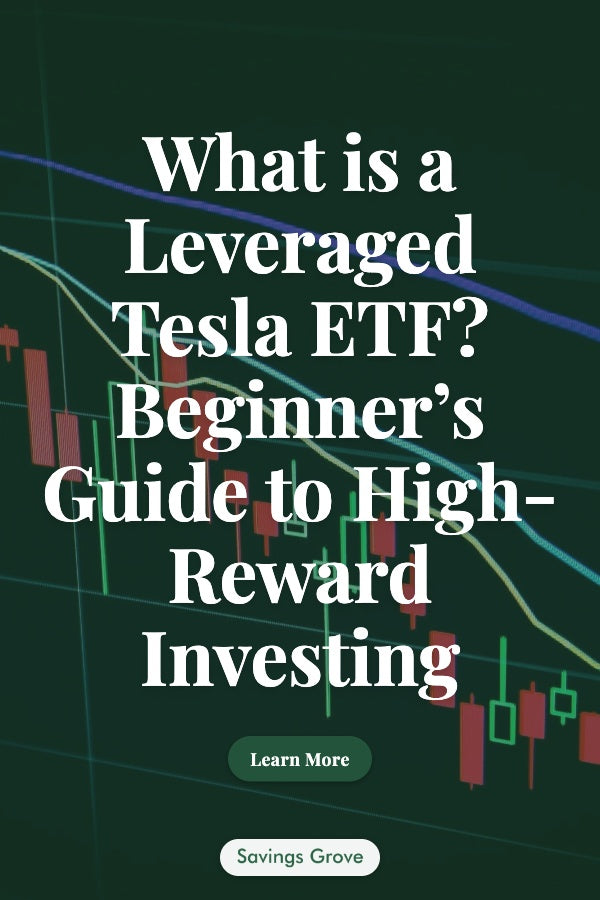
As a novice investor experimenting with high-reward investing, leveraged Tesla ETF could be a fairly safe bet. Tesla is a well-known global company that designs, develops, and manufactures electric cars. Customers can purchase or lease the cars in the US, China, and other global locations. In addition to electric vehicles, the company also develops energy generation and storage solutions. Tesla Inc. is traded on the stock exchange as NASDAQ: TSLA.
Considering its immense prospects, Tesla is easily a secure stock to invest in. However, risk-averse investors wishing to secure their money even further could consider opting for leveraged Tesla ETFs. Let’s dive in and understand precisely what leveraged ETFs are and how they work.
Understanding ETFs
Exchange-traded funds (ETF) are bought and sold like any other securities on the stock exchange. The ETF comprises a basket of securities from the particular index it tracks. For instance, if an ETF tracks the FTSE 100, it will contain most or some of the 100 stocks in the index. However, if the ETF tracks the S&P 500 index, it will include the 500+ stocks in the index. Typically, the basket has a selection of carefully curated stocks. Alternatively, they have derivatives, individual stocks, currency, and fixed-income securities.
Since the ETF follows a specific index, it mimics its performance and movement. As the index moves up or down, the ETF also follows. Accordingly, if the FTSE 100 moves upward by 2%, the ETF will also move by 2%. However, if you talk about the Tesla ETF, understand that this fund primarily invests in the Tesla Inc. stock. Fund managers seek to earn capital appreciation by banking on a single stock.
How are ETFs Leveraged?
That’s likely the next question on your mind. Leverage is an investing strategy in which the investor uses borrowed funds or debt to purchase listed futures and options. They may also use debt to trade in financial instruments directly, bypassing central exchanges or brokers. This strategy is called dealing in OTC products, which include currencies, commodities, stocks, and other instruments. The key difference is that both parties complete transactions without involving the central exchange.
This approach allows them to maximize the financial returns and profits they can make from stock price movements. Thus, a leveraged ETF holds debt and shareholder equity. The debt allows the fund to maximize the returns shareholders can potentially earn. Non-leveraged ETFs are also available, but they only hold shareholder equity and track an index directly. When we talk about leveraged Tesla ETF, understand that the ETF uses debt to invest mainly in the Tesla Inc. stock.
Using debt to leverage the ETF allows them to magnify the index movement. For instance, if the S&P index moves upward by 1%, leveraged ETFs can deliver returns of 2%, 3%, or even higher. Of course, the returns will depend on the amount of leverage traders use. The higher the leverage, the higher will be the returns.
Why Invest in a Leveraged Tesla ETF?
As explained earlier, ETF managers use borrowed funds to purchase futures and other derivatives. They seek to magnify the daily returns of the index they track by using index futures, futures contracts, and swap agreements. Leveraged ETFs must use the derivatives to rebalance on a daily basis. Their primary objective is to deliver returns much higher than the costs of the debt they have taken to make investments. If investors expect the asset will fall in value, fund managers may use derivatives to generate returns if that happens.
On the flip side, it is crucial to note that if the index does not move as expected, the ETF’s losses are also magnified. Accordingly, if the index were to fall by 1%, the leverage exaggerates the losses to 2%, 2%, and higher. Even if you’ve picked a stable and secure stock like Tesla and invested in a leveraged Tesla ETF, you should be aware of and prepared for the risks. While the potential for making rich profits is high, you should also understand that the potential for losses is higher than in traditional investments. However, fund managers will attempt to minimize losses by using inverse leveraged ETFs also.
Leveraged ETF Tips to Keep in Mind
Even though leveraged Tesla ETF is a reasonably safe investment opportunity, it’s advisable to invest your money with care. Here’s what you need to know.
- Experts advise you to study the prospectuses in detail. You should understand the warnings and cautionary statements funds provide. Explore the risk propensity carefully before diving into the purchase.
- Investors should be mindful of the management fees and transaction costs. These expenses can lower the returns you could potentially earn from the investment. Expect costs to be around 1% to 1.04%, though it can be higher for selected ETFs. in comparison, non-leveraged ETFs have lower fees.
- Investors preferring to invest in leveraged Tesla ETFs will find that their returns are restricted to the movement of Tesla stock. However, know that leverage exchange-traded funds typically have a broad range of assets to trade on the exchange. Explore the potential for returns before investing.
- If you’re a long-term investor seeking to maintain holdings over an extended time, leveraged Tesla ETFs or any leveraged ETFs for that matter may not be the ideal choice for you. That’s because the investment may not closely mimic the returns on the specific index the ETF tracks.
- Recovering from ETF losses can take a long time to recover since they are magnified. Be prepared for the possibility that you may not be able to recover them at all.
- Some leveraged ETFs investing in specific stocks have low volume trading so buying and selling shares is more challenging. In that case the potential for returns is also lower.
Although leveraged Tesla ETF is a great investment opportunity, doing your research ahead of time is crucial so you understand exactly what you’re getting into. Weigh the pros and cons and study the market carefully before sinking your money into this investment opportunity.

